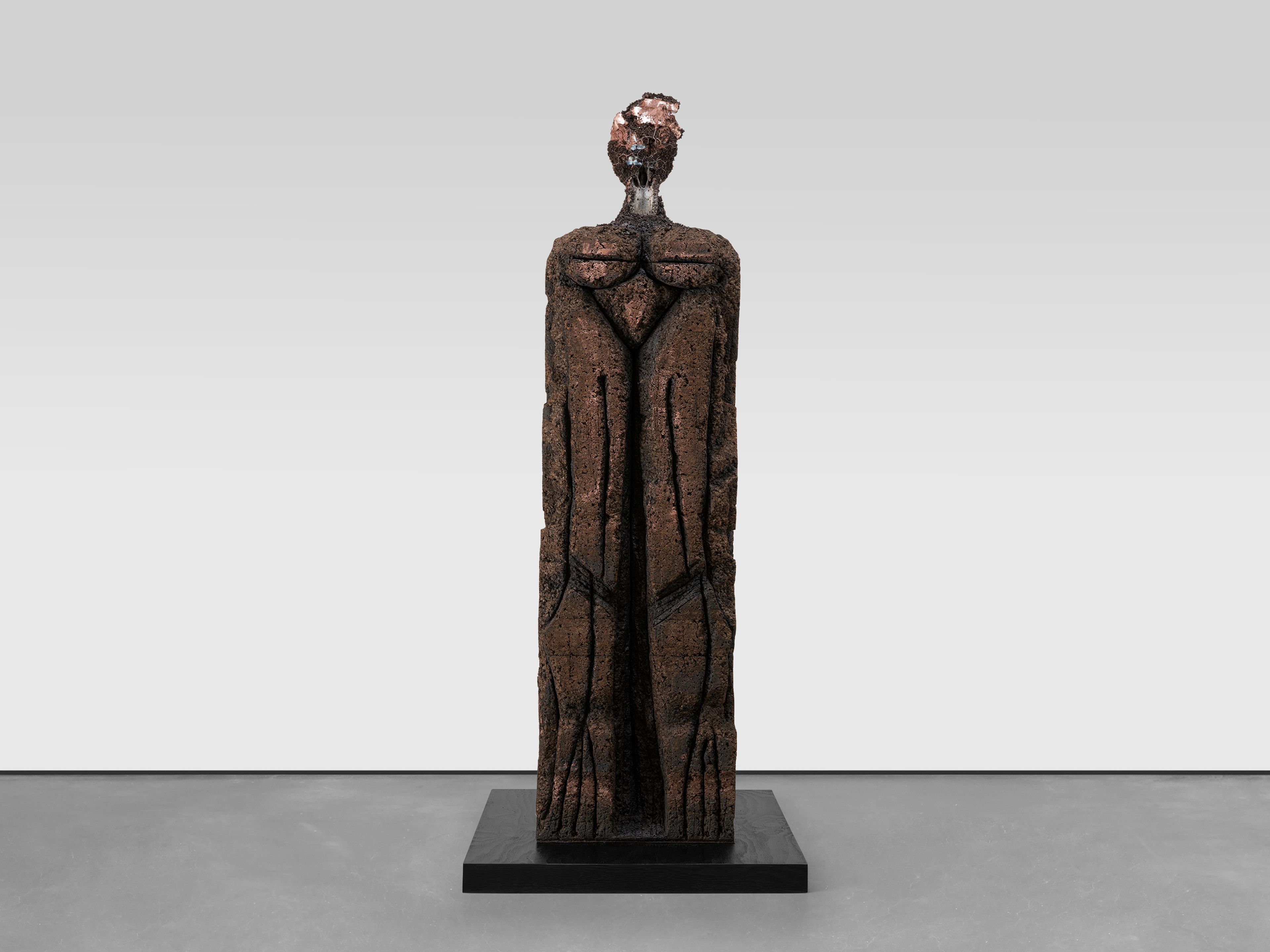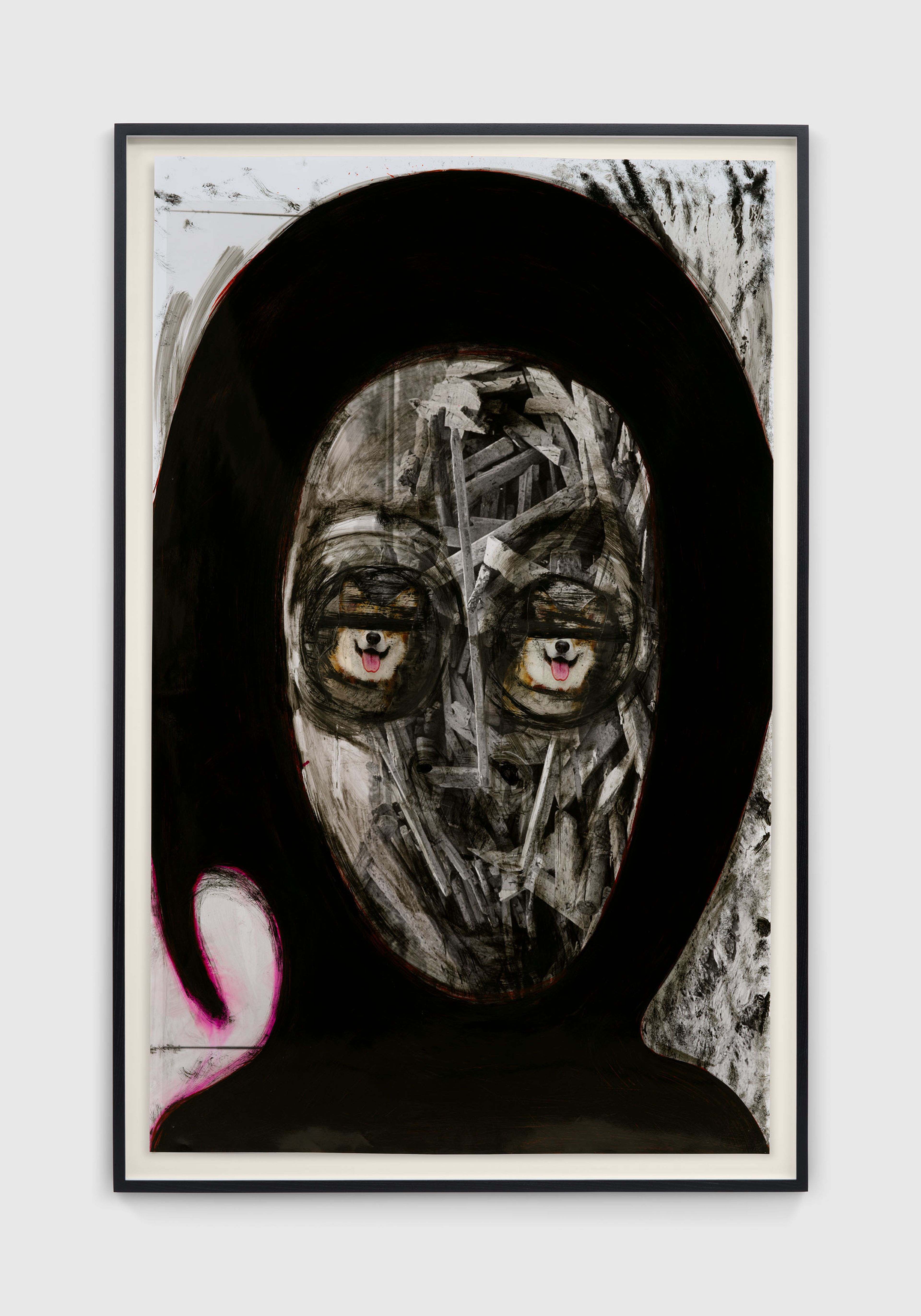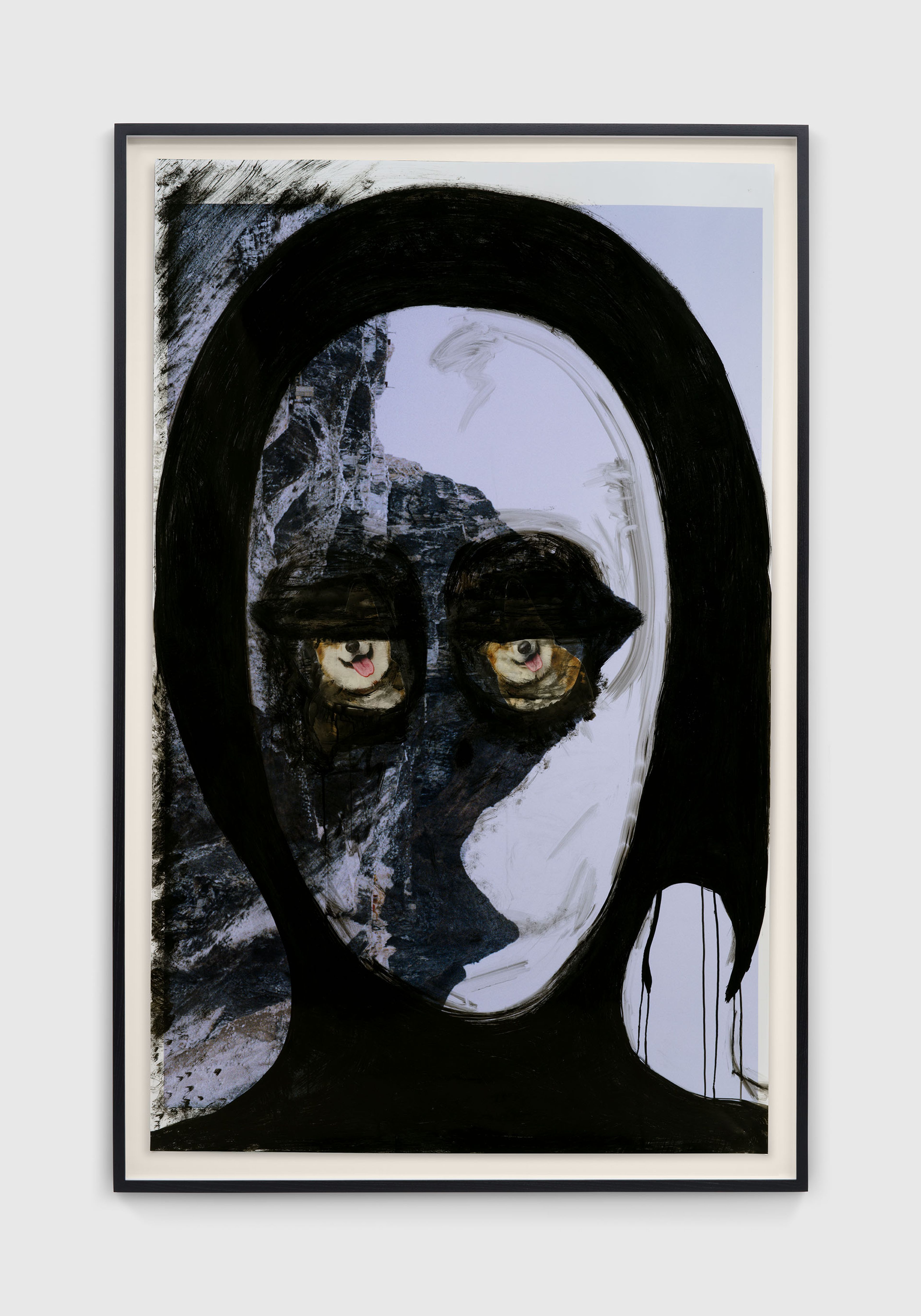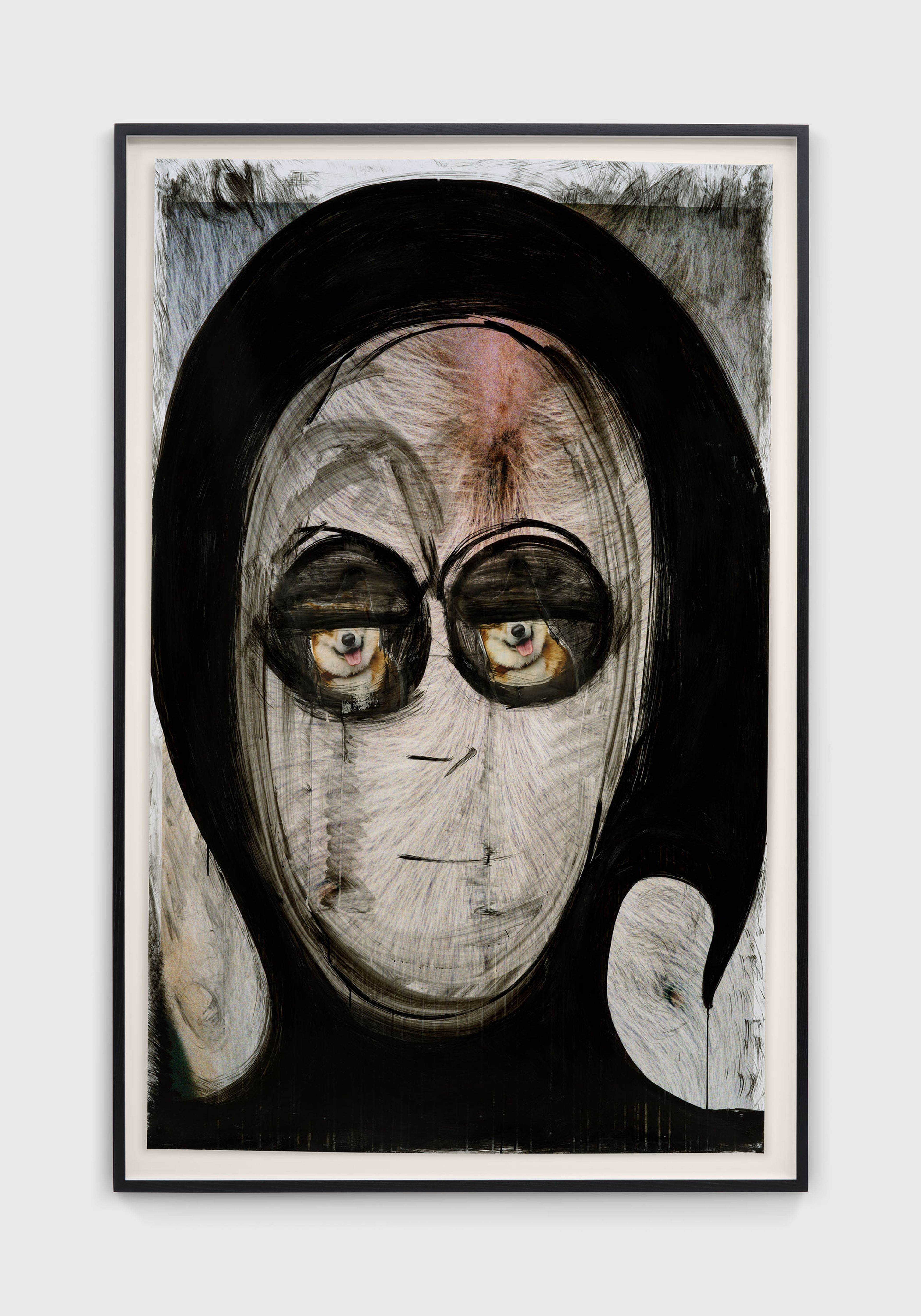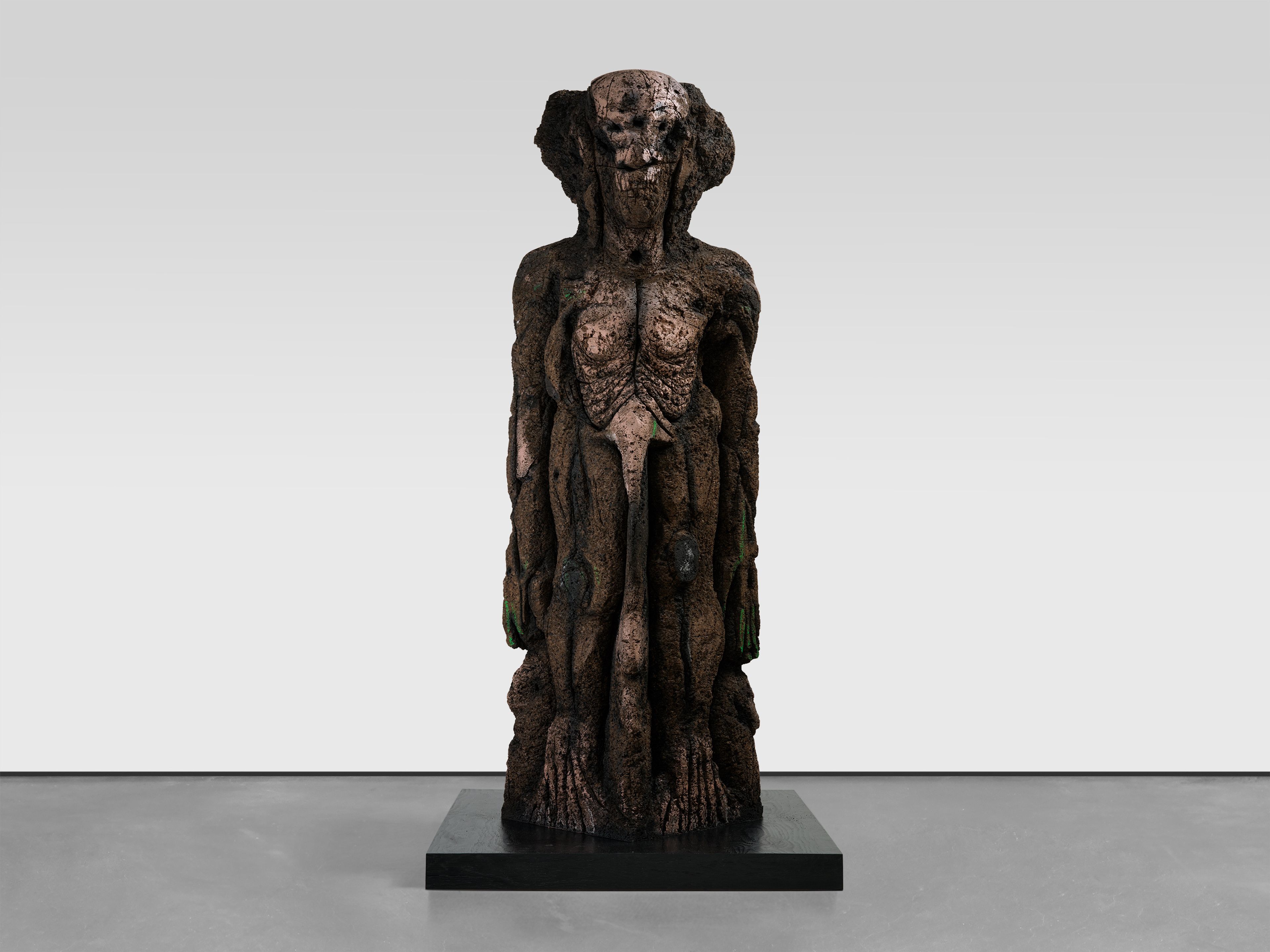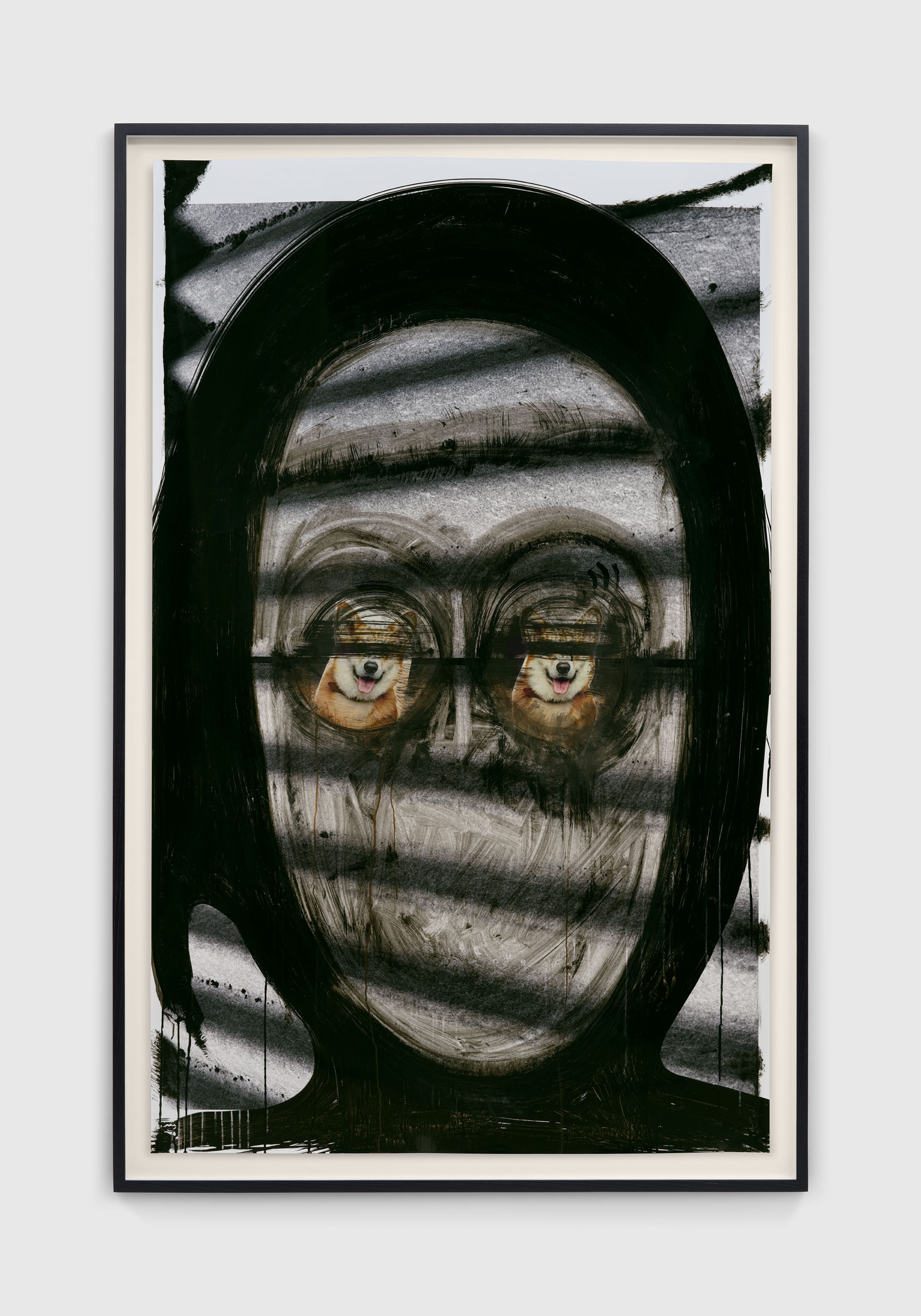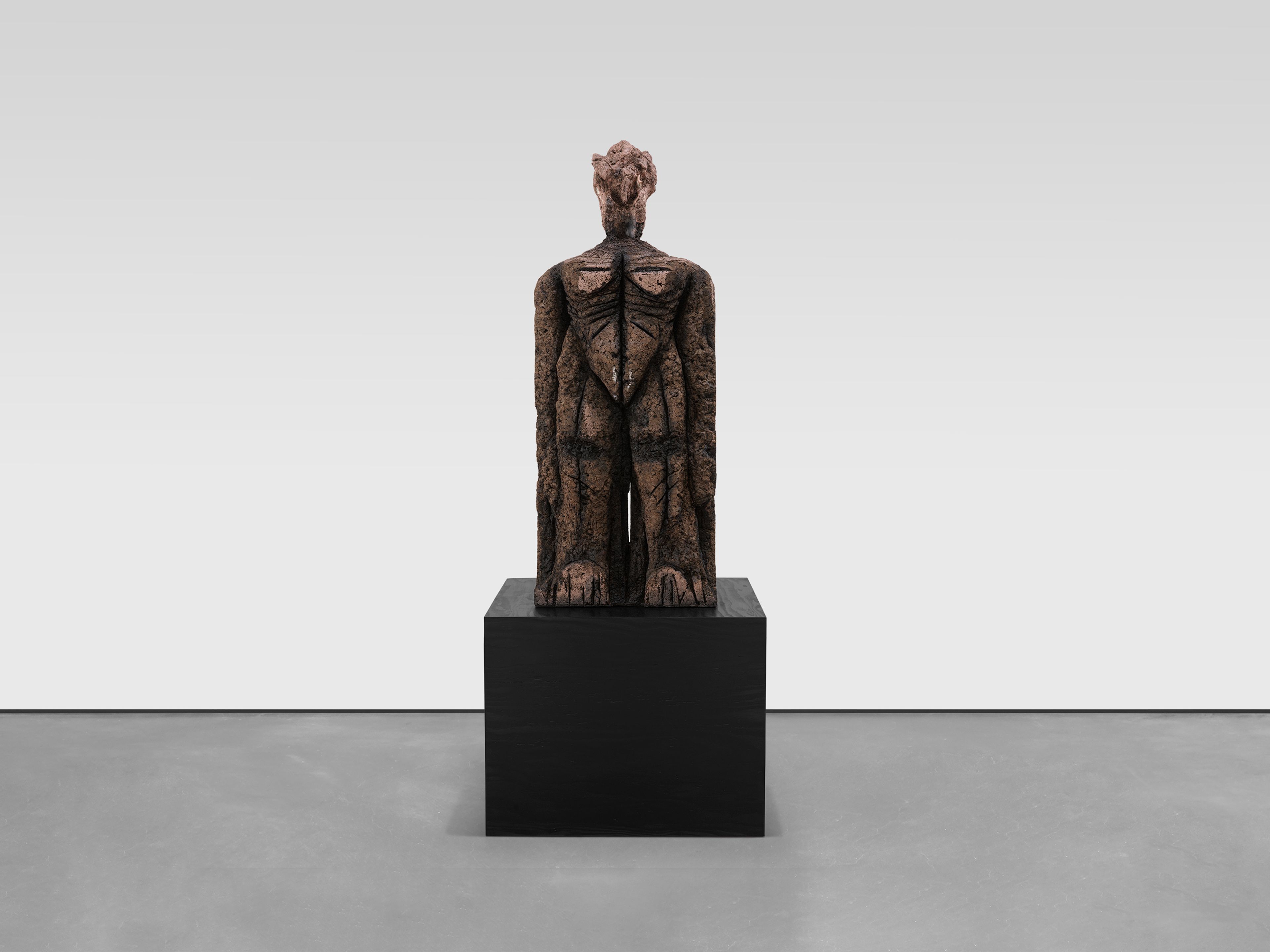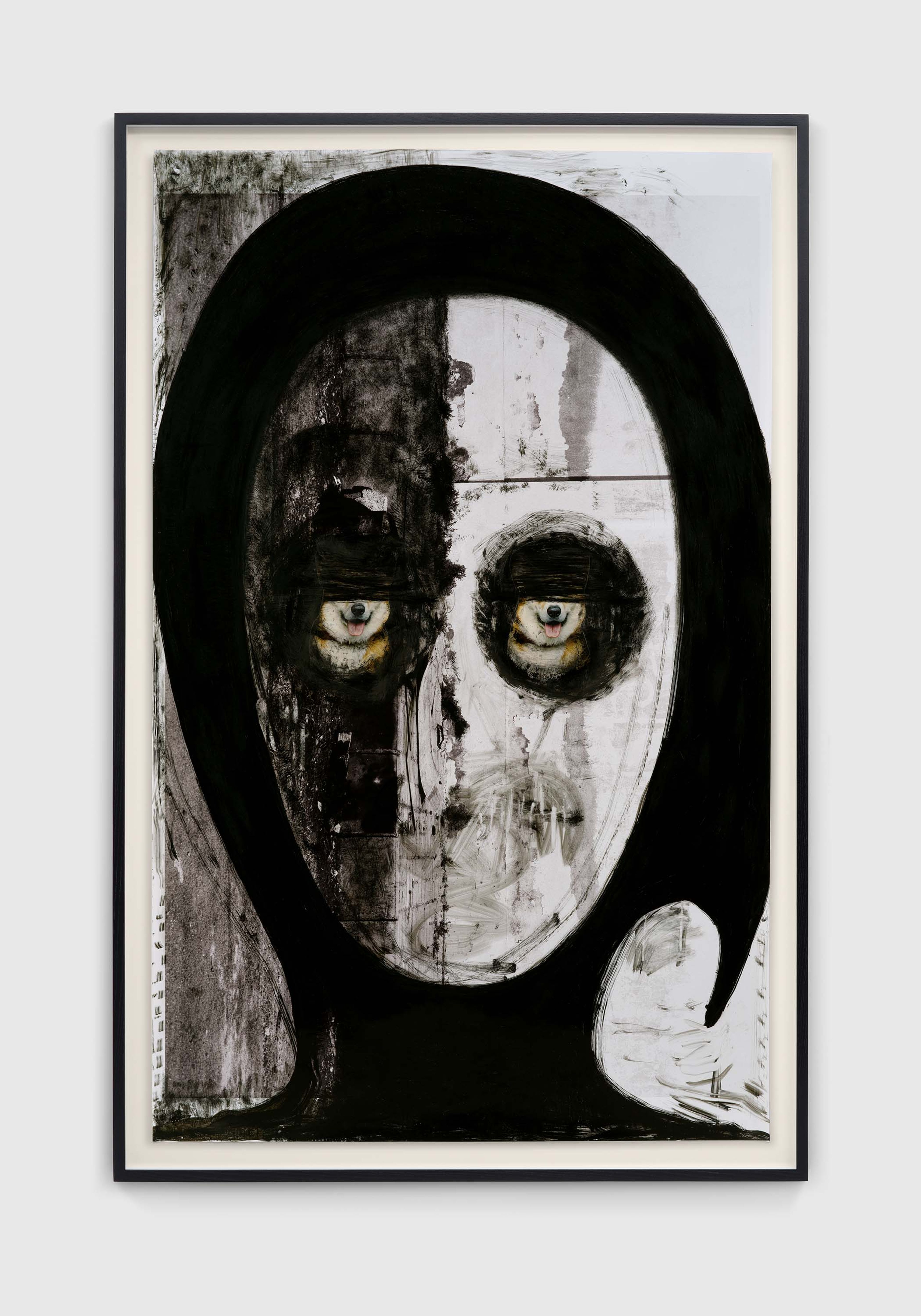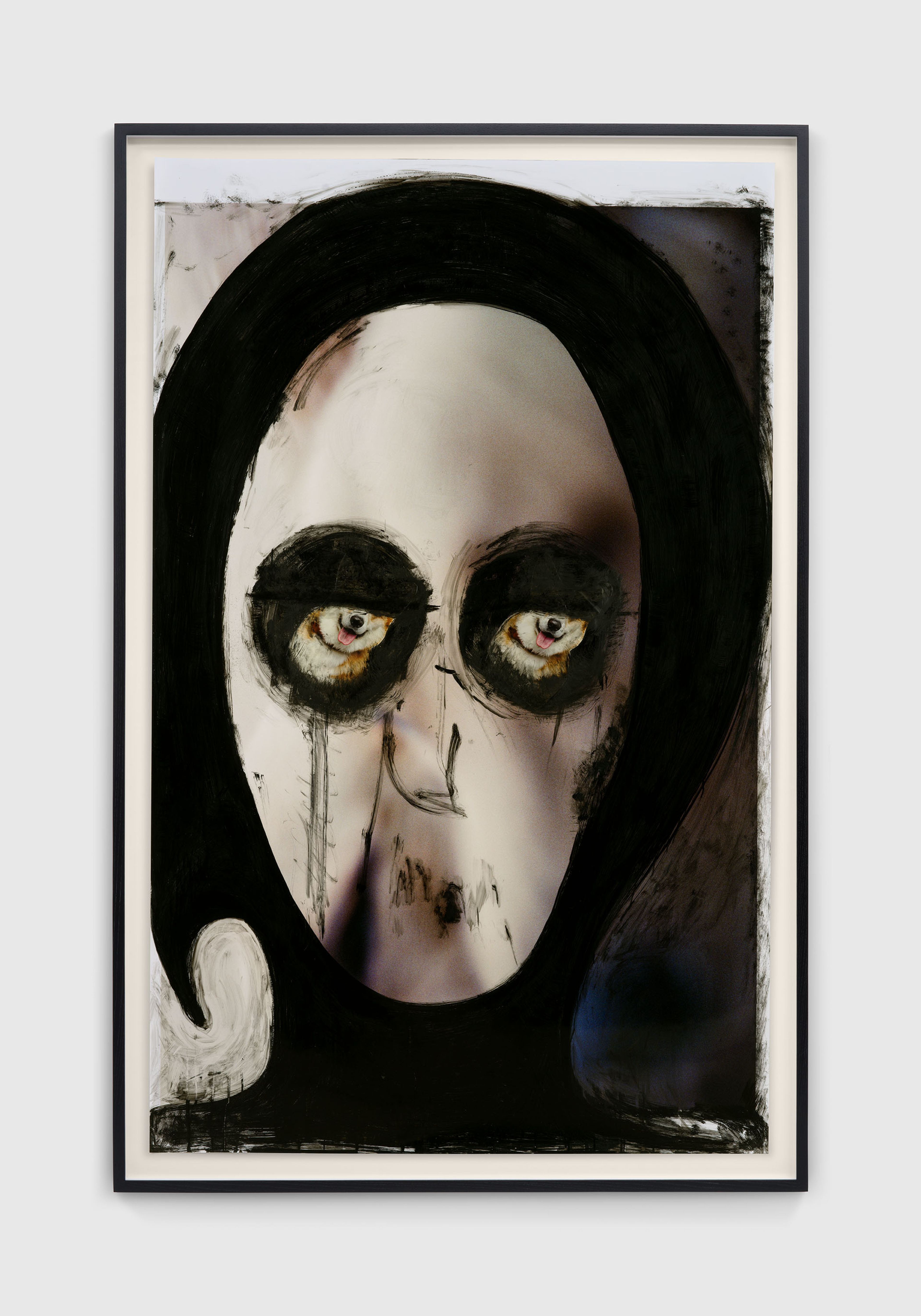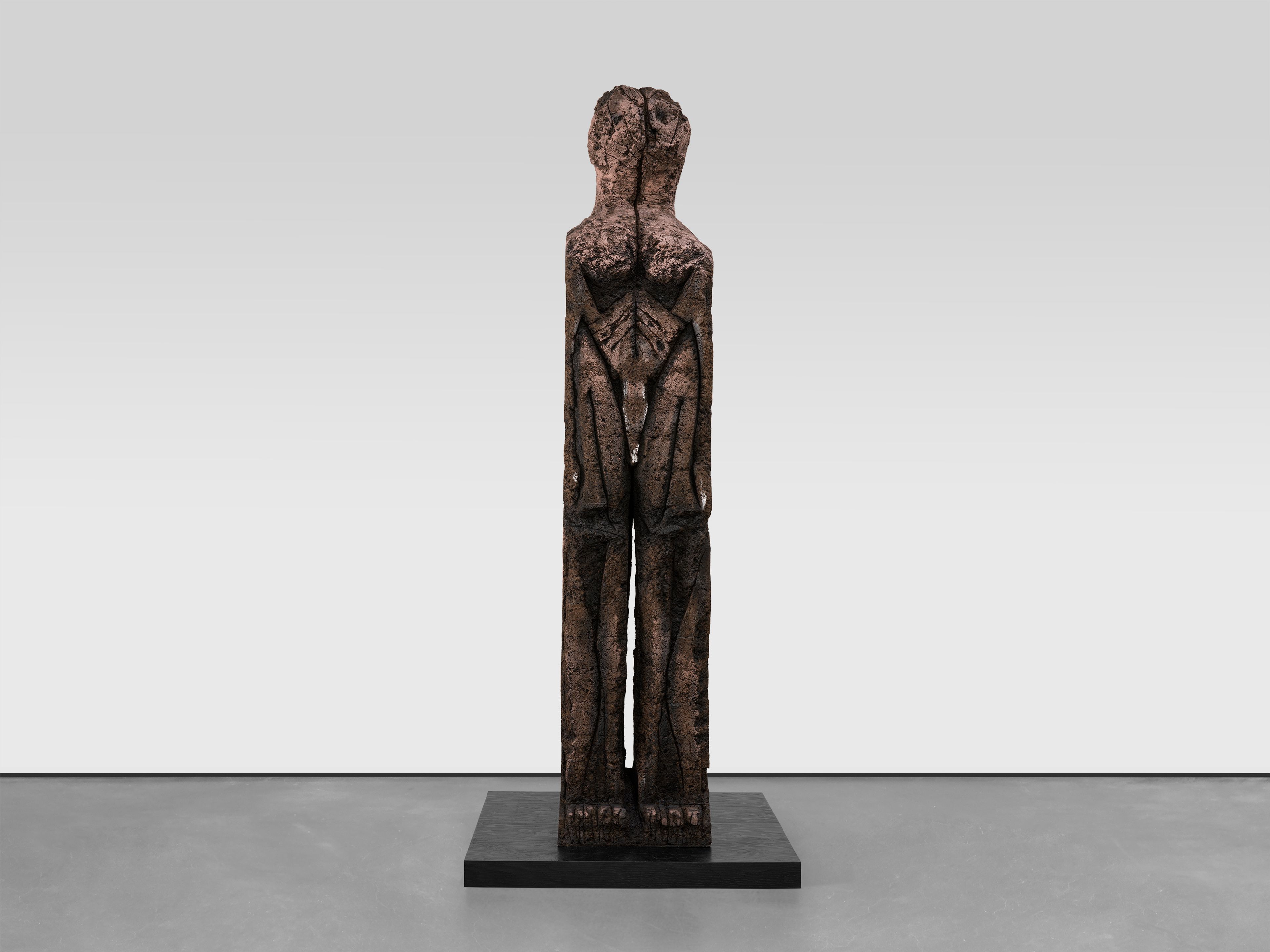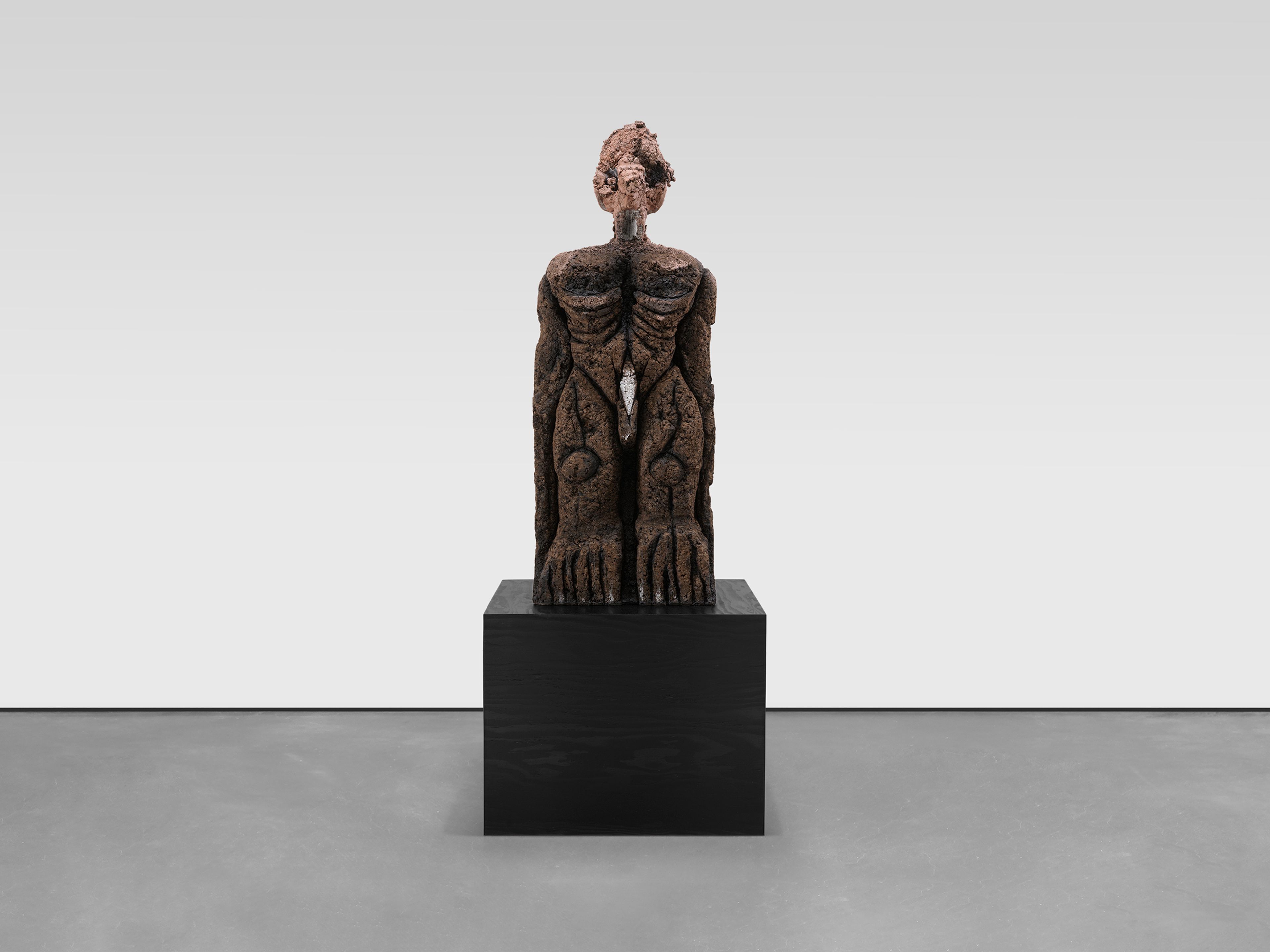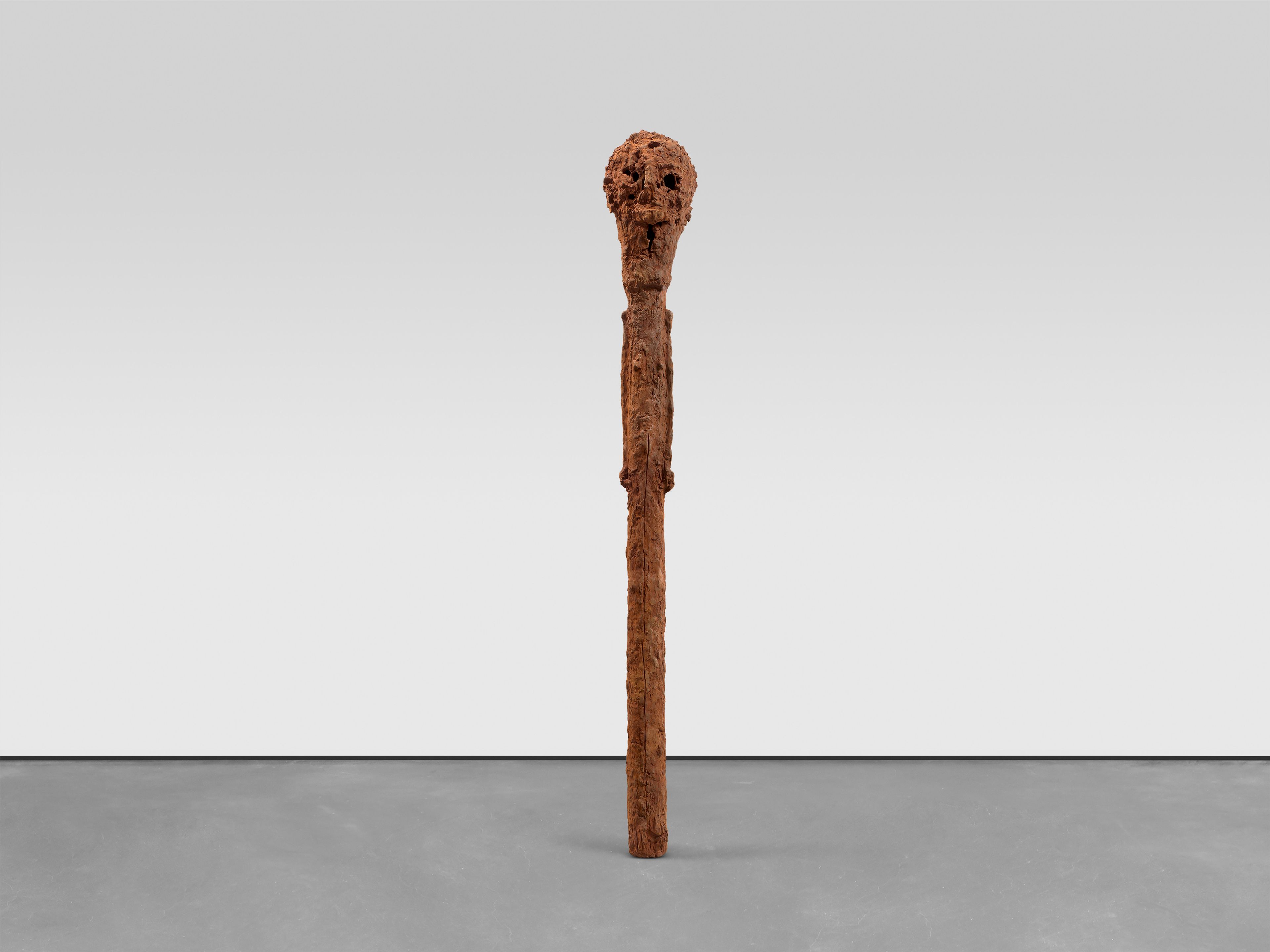Huma Bhabha: Distant Star
Installation view, Huma Bhabha: Distant Star, David Zwirner, Paris, 2025
Past
June 13—July 26, 2025
Opening Reception
Friday, June 13, 6–8 PM
Opening Reception
Friday, June 13, 6–8 PM
Location
Paris
108, rue Vieille du Temple
75003 Paris
Tue, Wed, Thu, Fri, Sat: 11 AM-7 PM
Artist
Explore

Huma Bhabha Distant Star
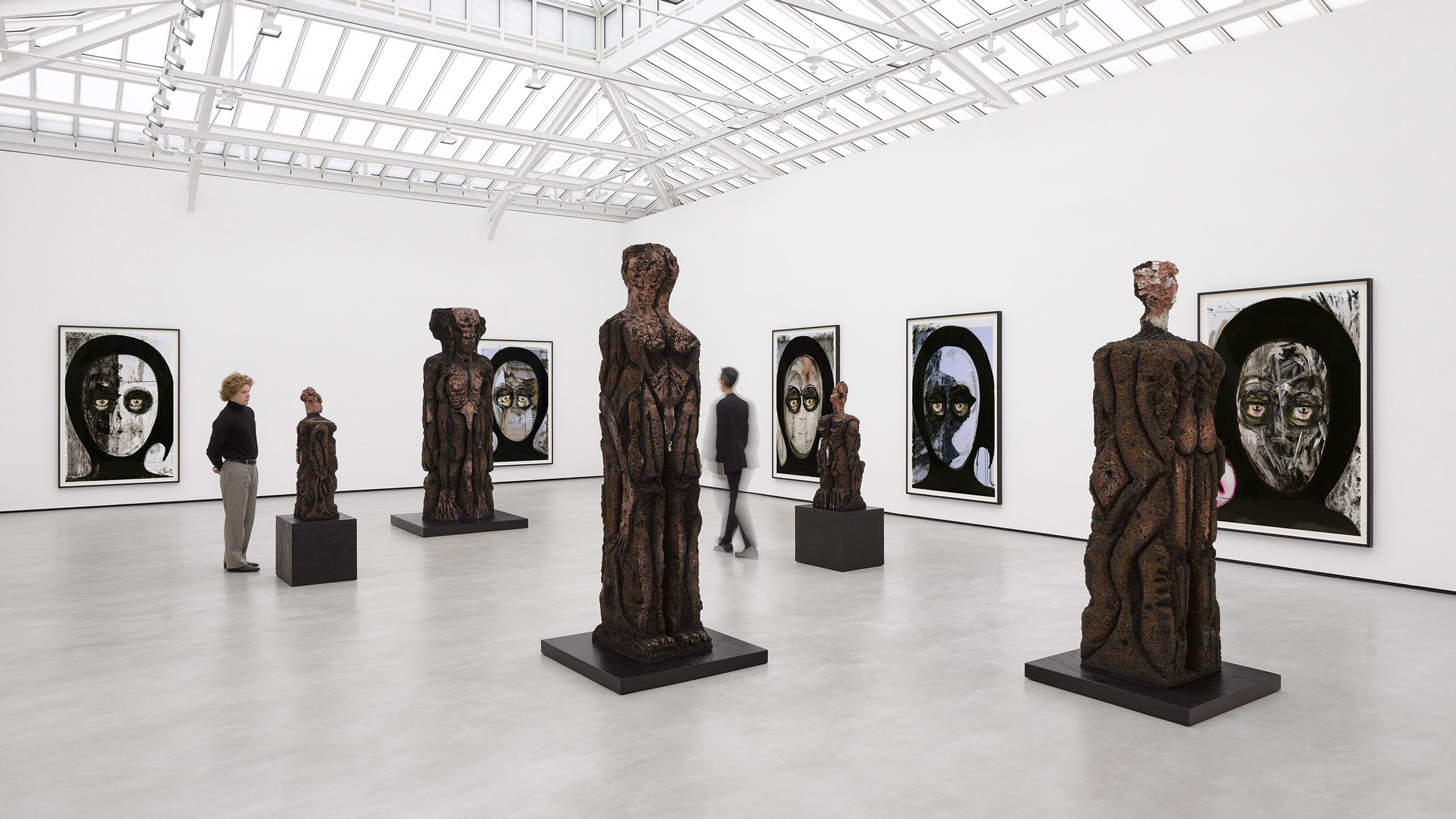
Installation view, Huma Bhabha: Distant Star, David Zwirner, Paris, 2025
“The relationship between my drawings and sculptures has evolved naturally, they are made side by side, related not in a literal way but rather as an absorbing of each other.”
—Huma Bhabha in conversation with Sheena Wagstaff
“Beginning with pictures she has taken … she layers the images with hallucinatory streaks of ink in saturated colors and sharp, gestural figuration, lending the works the same spontaneity and raw materiality as her sculptures.”
—Heidi Zuckerman, CEO and Director, Orange County Museum of Art, Costa Mesa, California
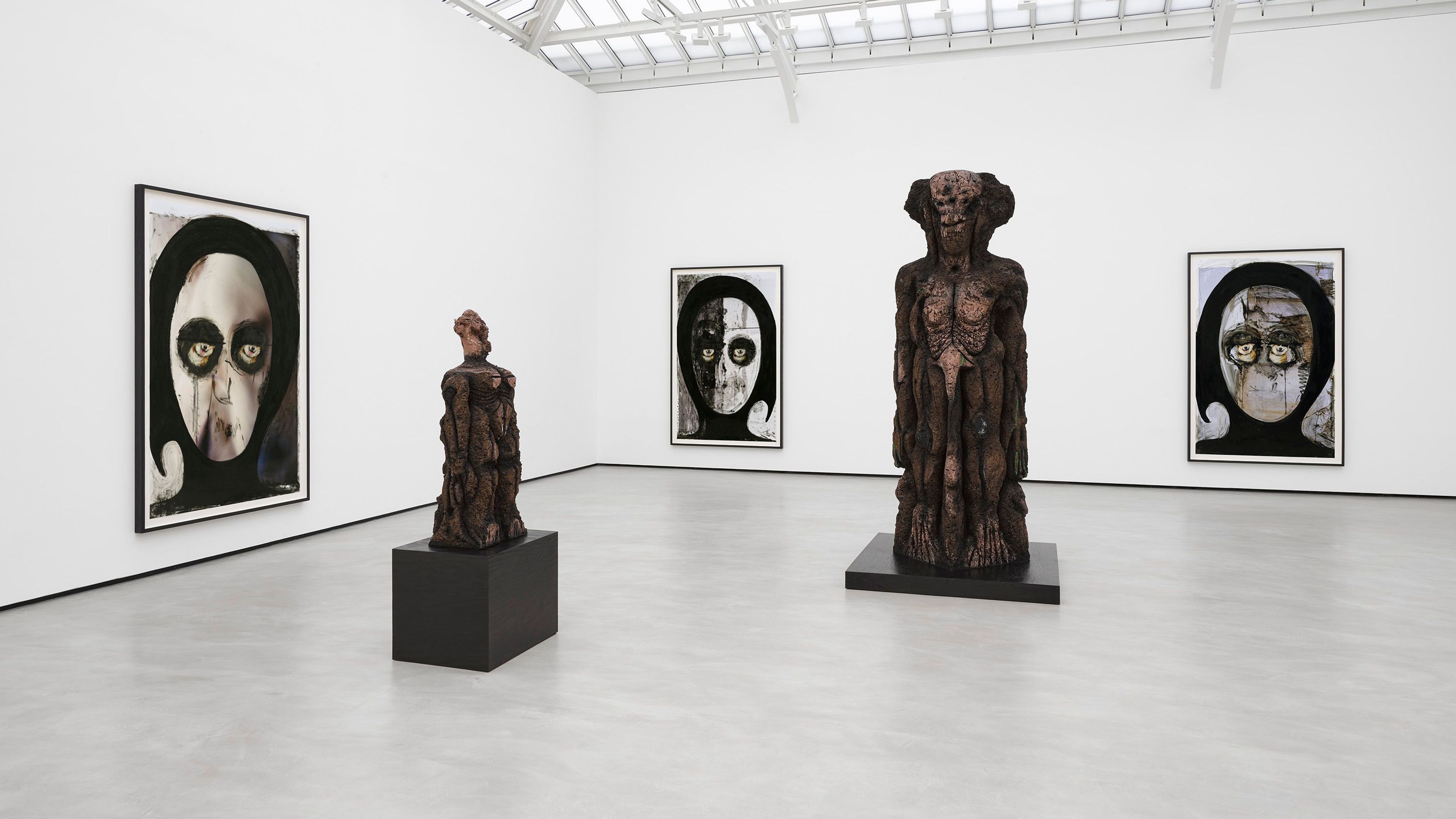
Installation view, Huma Bhabha: Distant Star, David Zwirner, Paris, 2025
“With her savage embrace of what can only be called by that 20th-century word 'primitivism', her mixing of beauty and revulsion, her pastiches, her awe at the mystery of human existence, she is today’s Picasso.”
—Jonathan Jones, critic
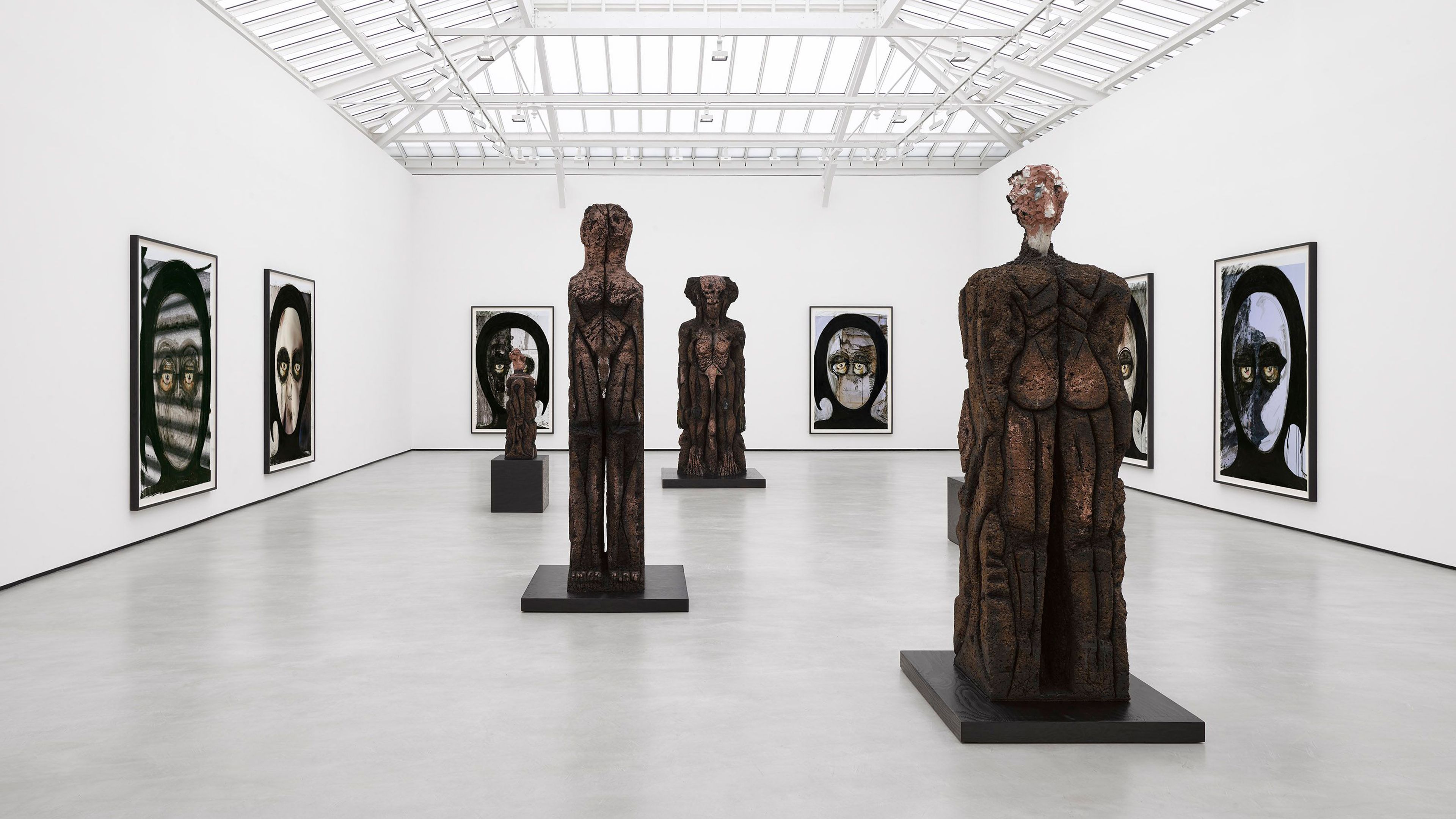
Installation view, Huma Bhabha: Distant Star, David Zwirner, Paris, 2025
“Because it is subjected to extreme injunctions … contemporary sculpture sometimes struggles to remember the buried realm that forged its legacy. In contrast, Huma Bhabha’s monstrous creatures display a type of formal vocabulary and creativity that is both timeless and marked by our own obsessions - incomprehensible unless sifted through the lens of the century.”
—Numa Hambursin, Artistic Director, Fondation GGL, Montpellier
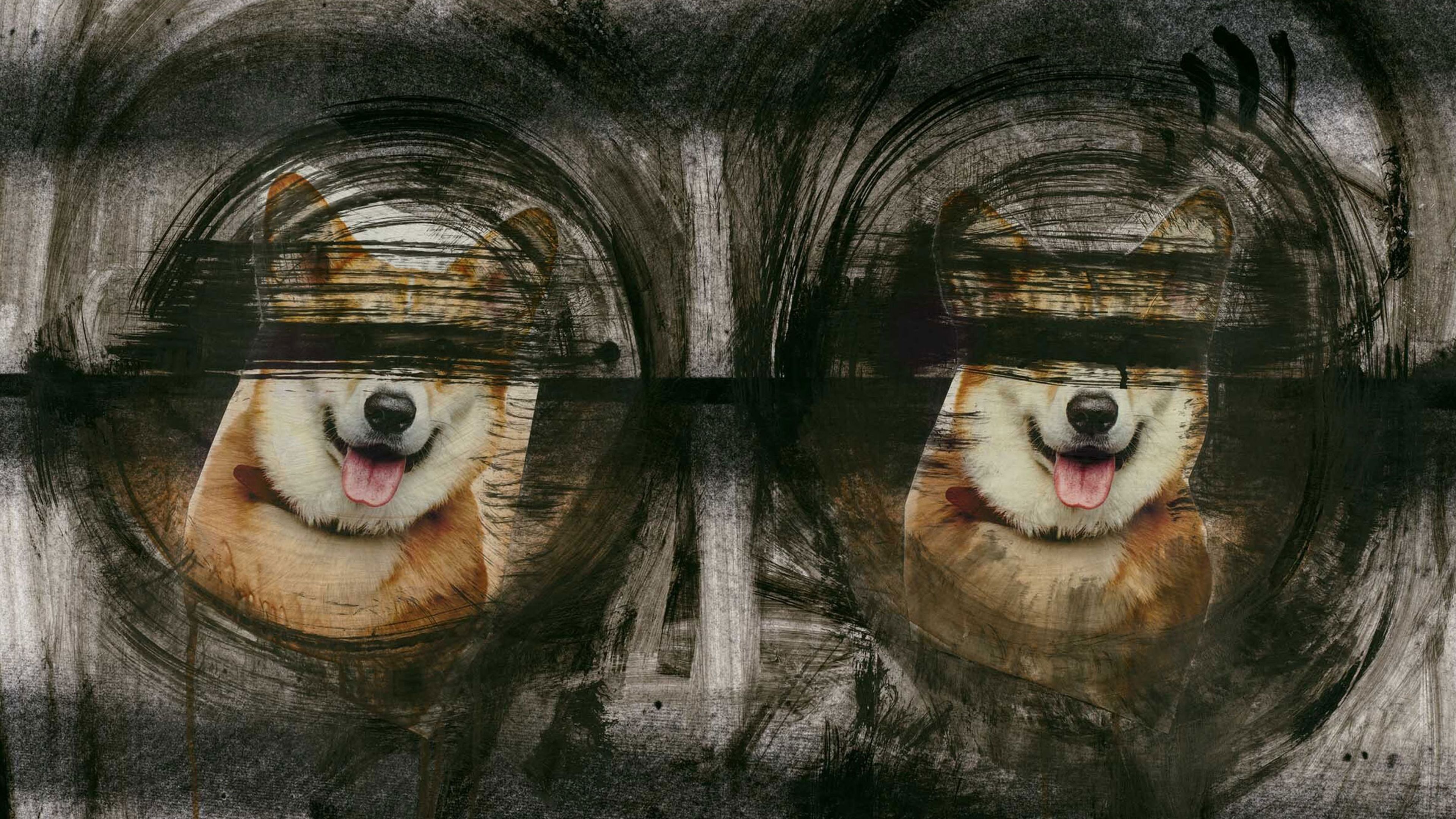
Huma Bhabha, Untitled, 2025 (detail)
“Bhabha appreciates how a found object can be both material and content, and seems to take special pleasure in layering together sources of inspiration that camouflage each other in combination.... Whatever structural and thematic value may be found in the packaging and trash that feature in Bhabha’s … sculptures, they are themselves also allegories for the consumption and digestion active in her artistic mind.”
—Peter Eleey, Curator-at-Large at UCCA Center for Contemporary Art, Beijing, in Huma Bhabha: Welcome . . . to the one who came, David Zwirner Books, 2025
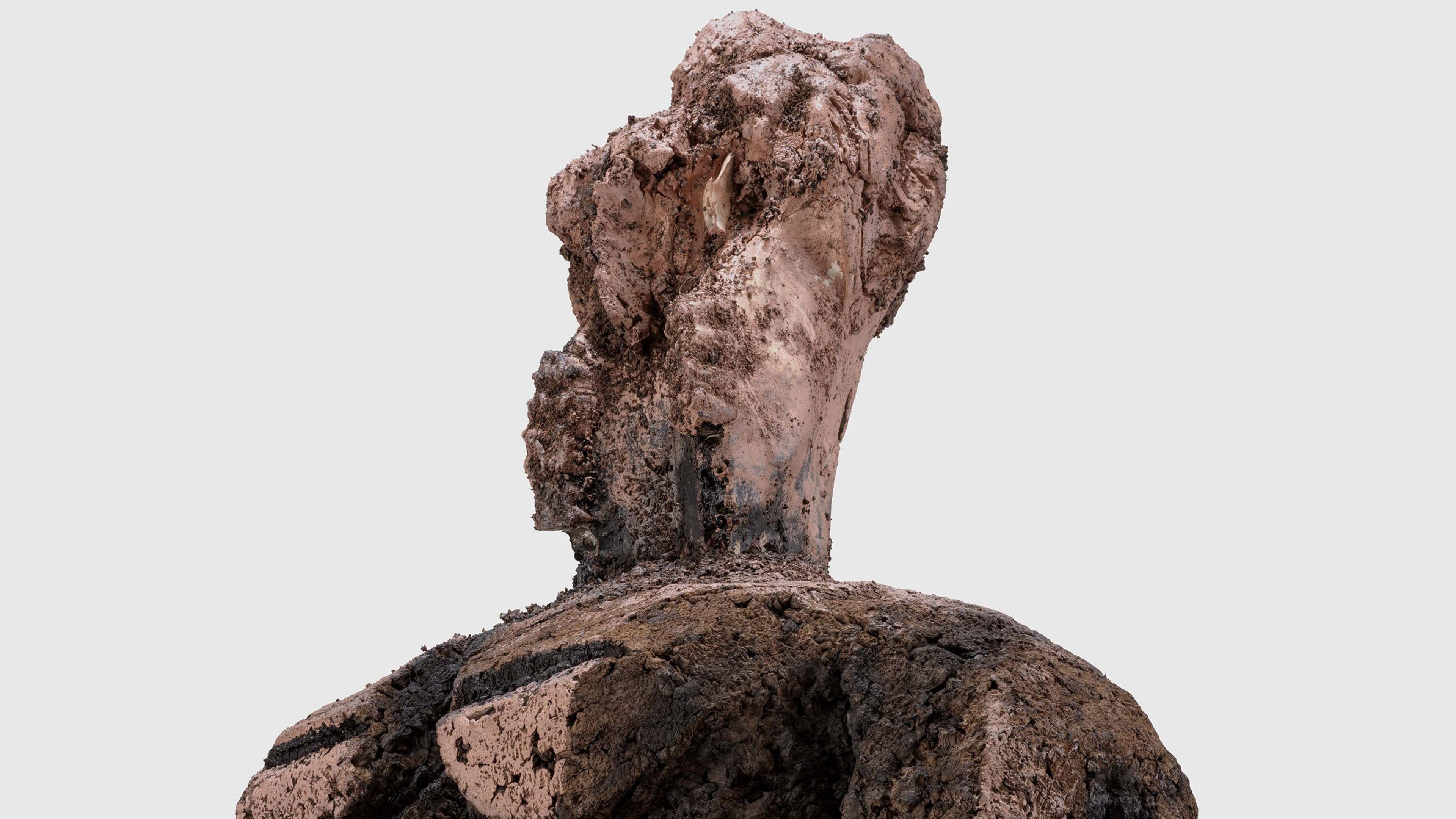
Huma Bhabha, Learn Something, 2025 (detail)
“I don’t see the grotesque as a negative…. You might find it scary or too confrontational, but you’re still attracted to it, you can’t just walk away from it – that’s important for me, to keep you coming back.”
—Huma Bhabha, interviewed in The Guardian, 2025
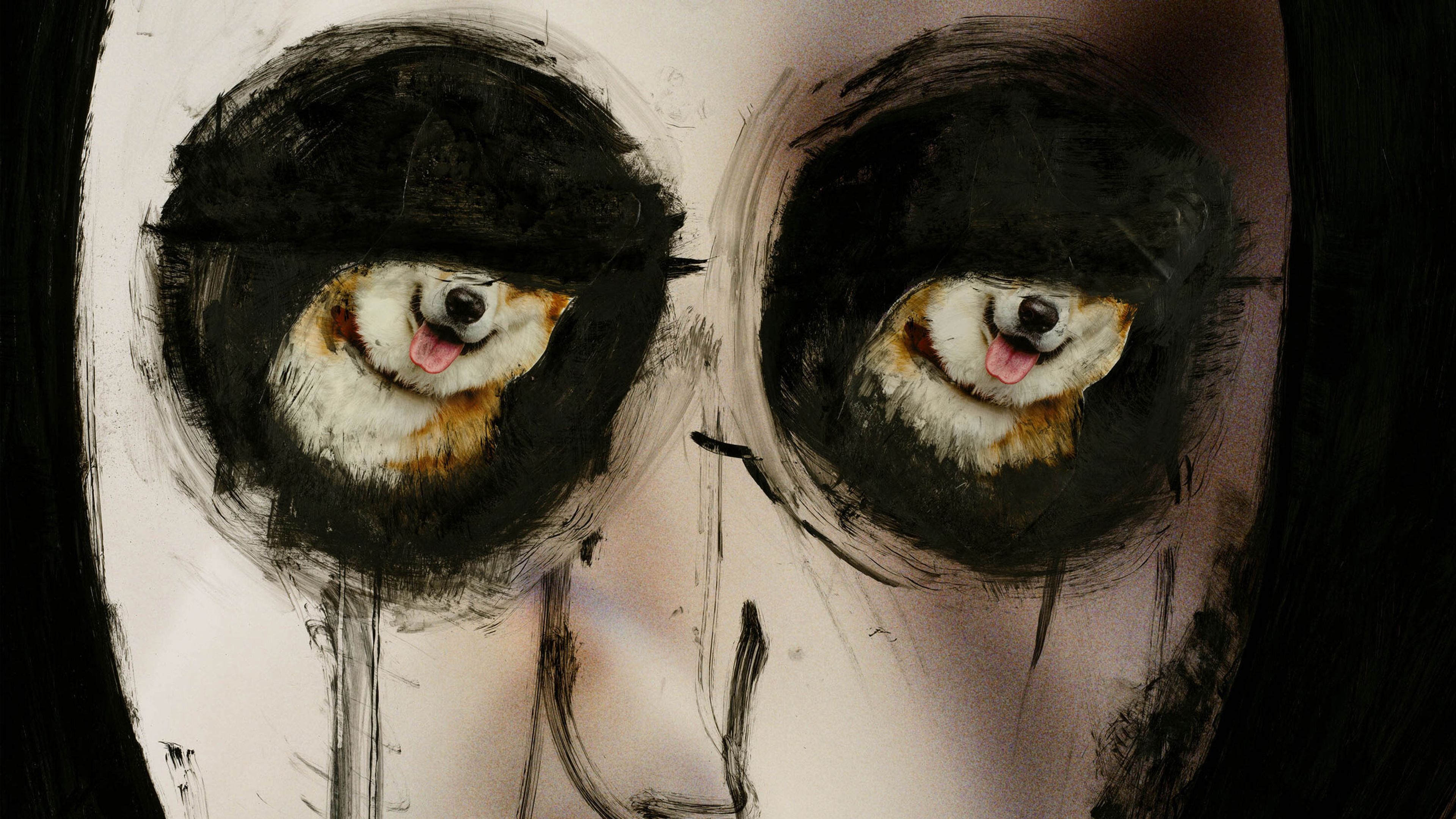
Huma Bhabha, Untitled, 2025 (detail)
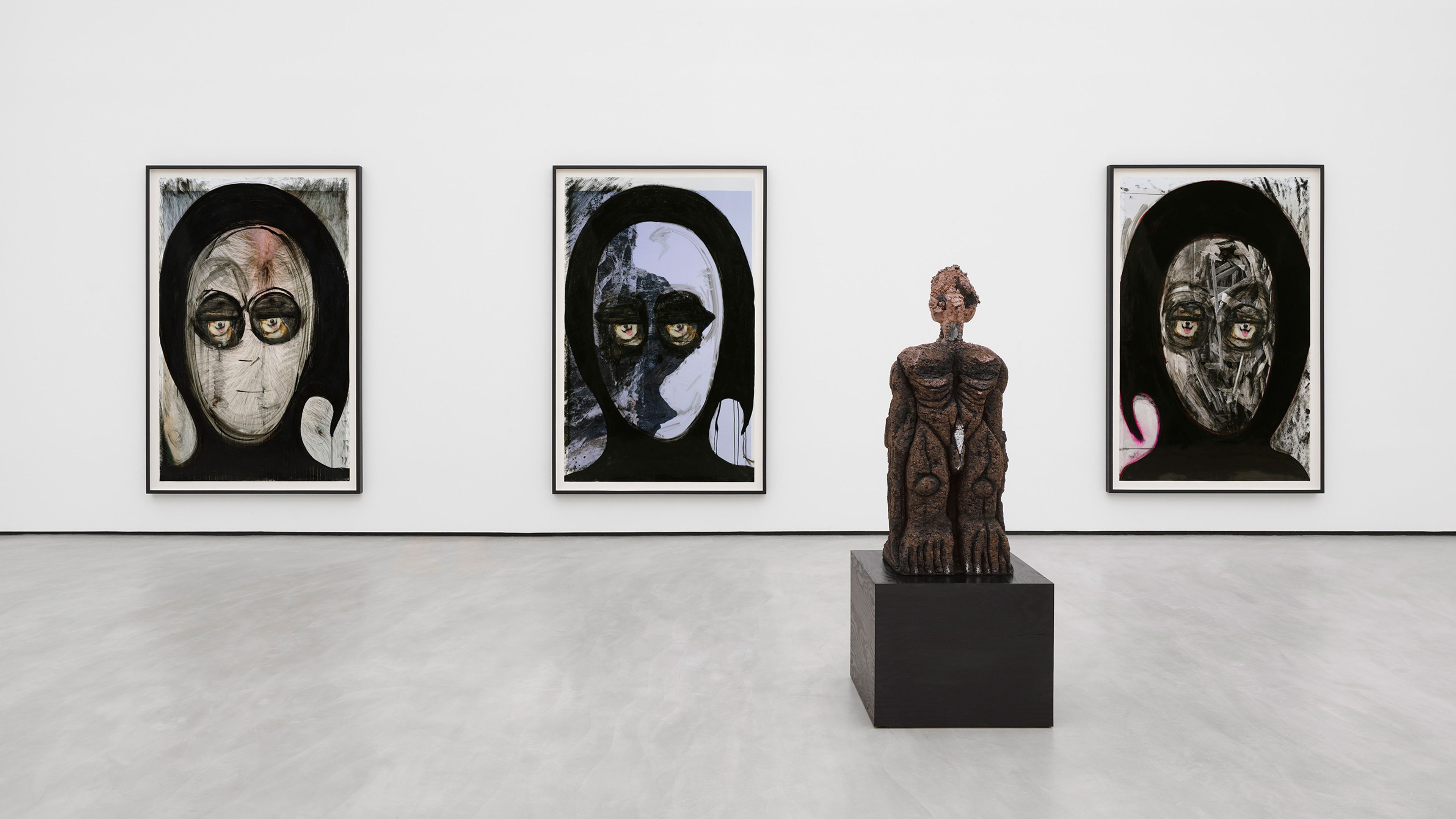
Installation view, Huma Bhabha: Distant Star, David Zwirner, Paris, 2025
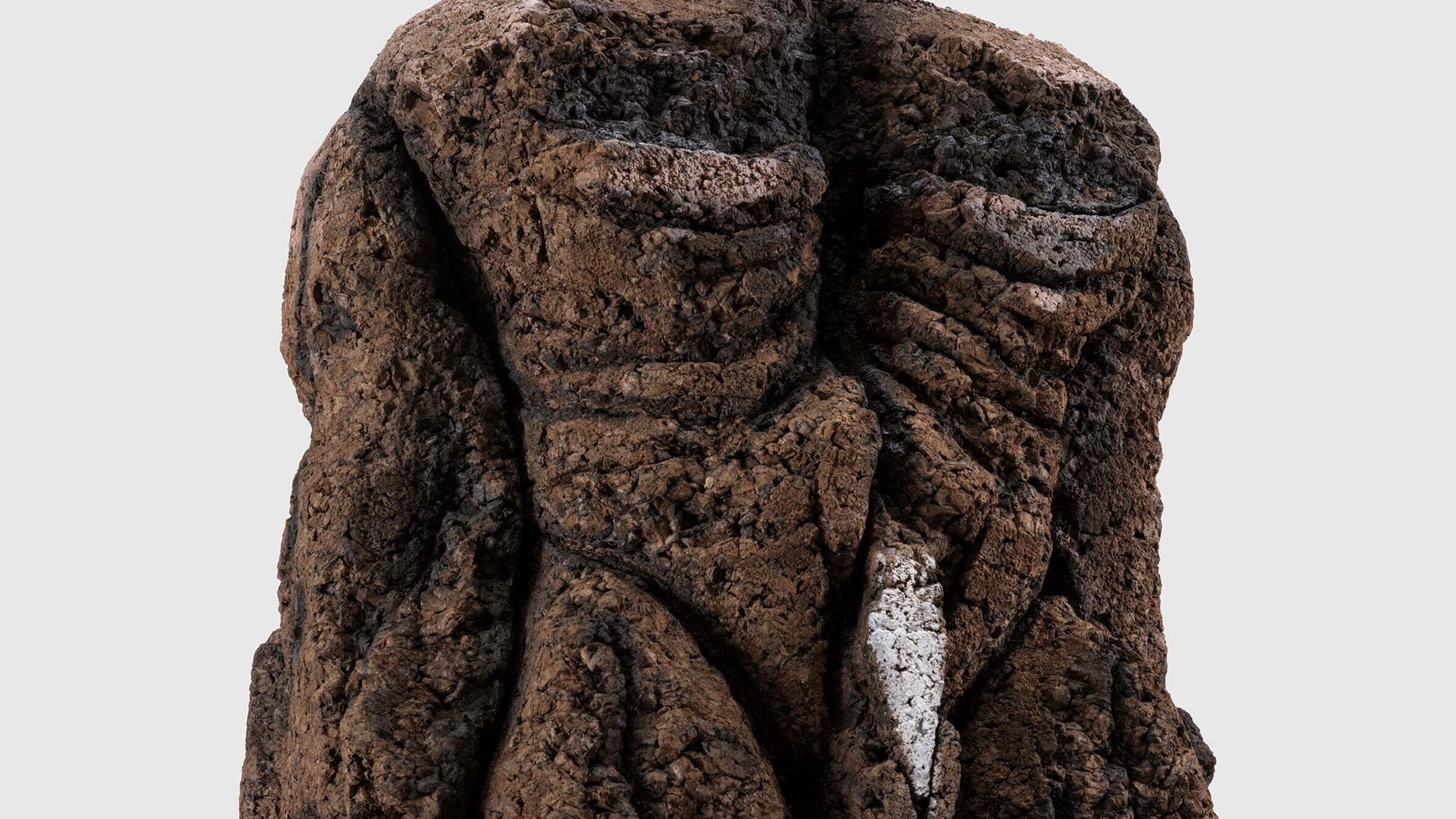
Huma Bhabha, Answer Nothing, 2025 (detail)
“Bhabha’s excursion into cast iron … emphasizes in physical terms the artist’s métier of producing what she has termed ‘instant ruins,’ a phrase that is particularly apt for describing sculpture, particularly monumental sculpture, which historically was created with the intention to remain intact for centuries.”
—Tausif Noor, critic and curator, in Huma Bhabha: Welcome . . . to the one who came, David Zwirner Books, 2025
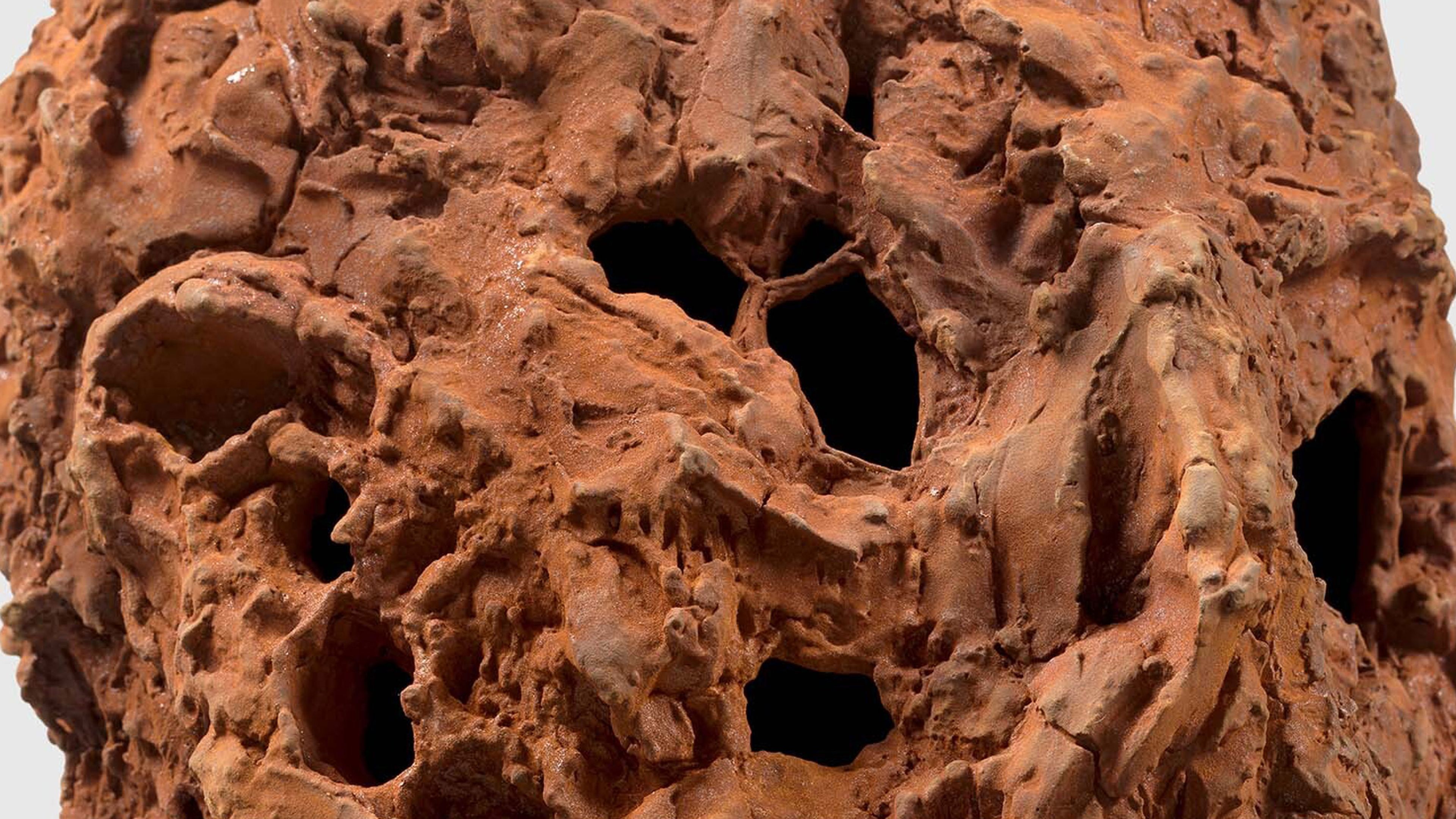
Huma Bhabha, Distant Star, 2025 (detail)
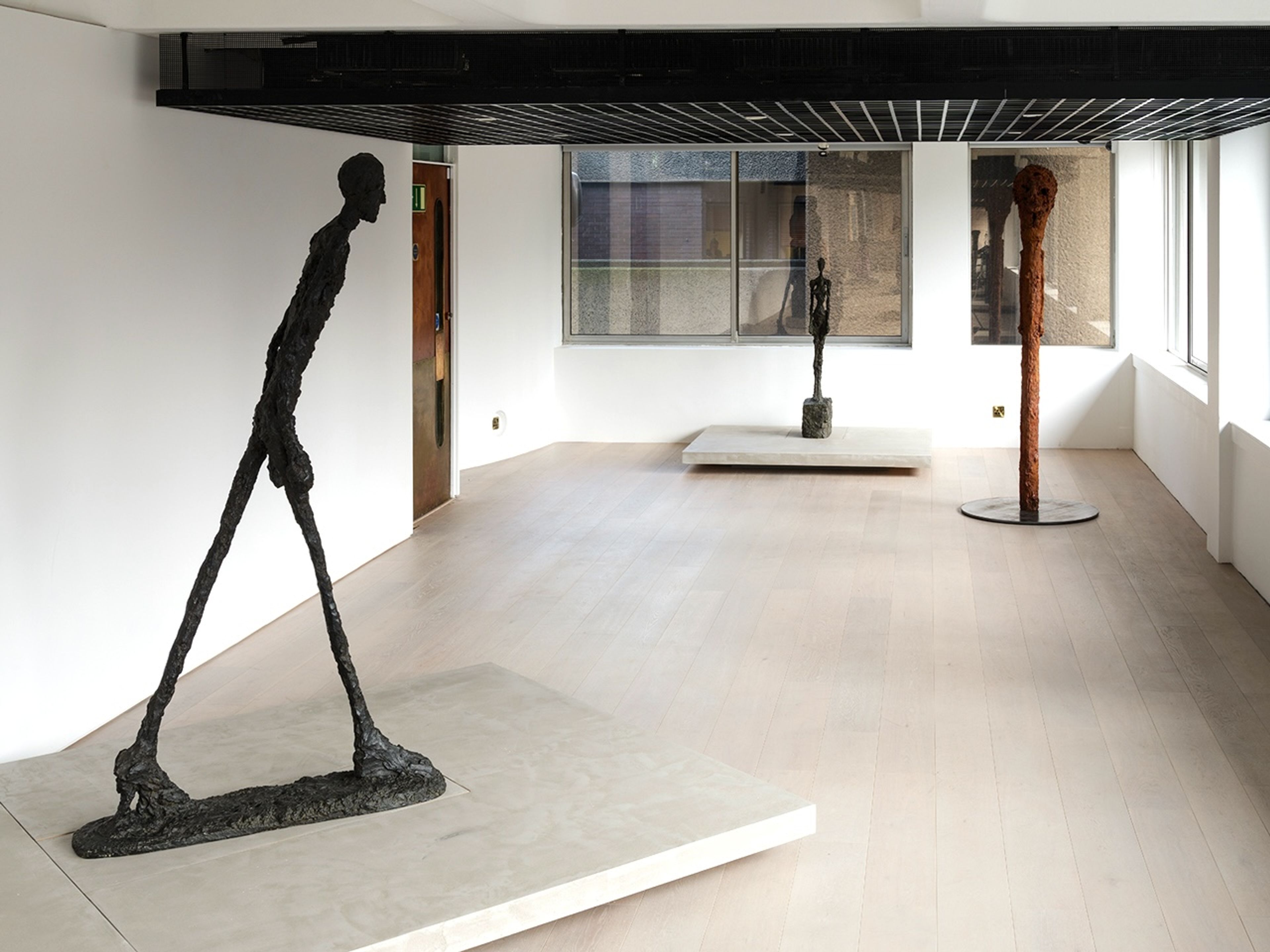
Installation view, Encounters: Giacometti, Barbican Centre, London, 2025. Photo by Max Creasy
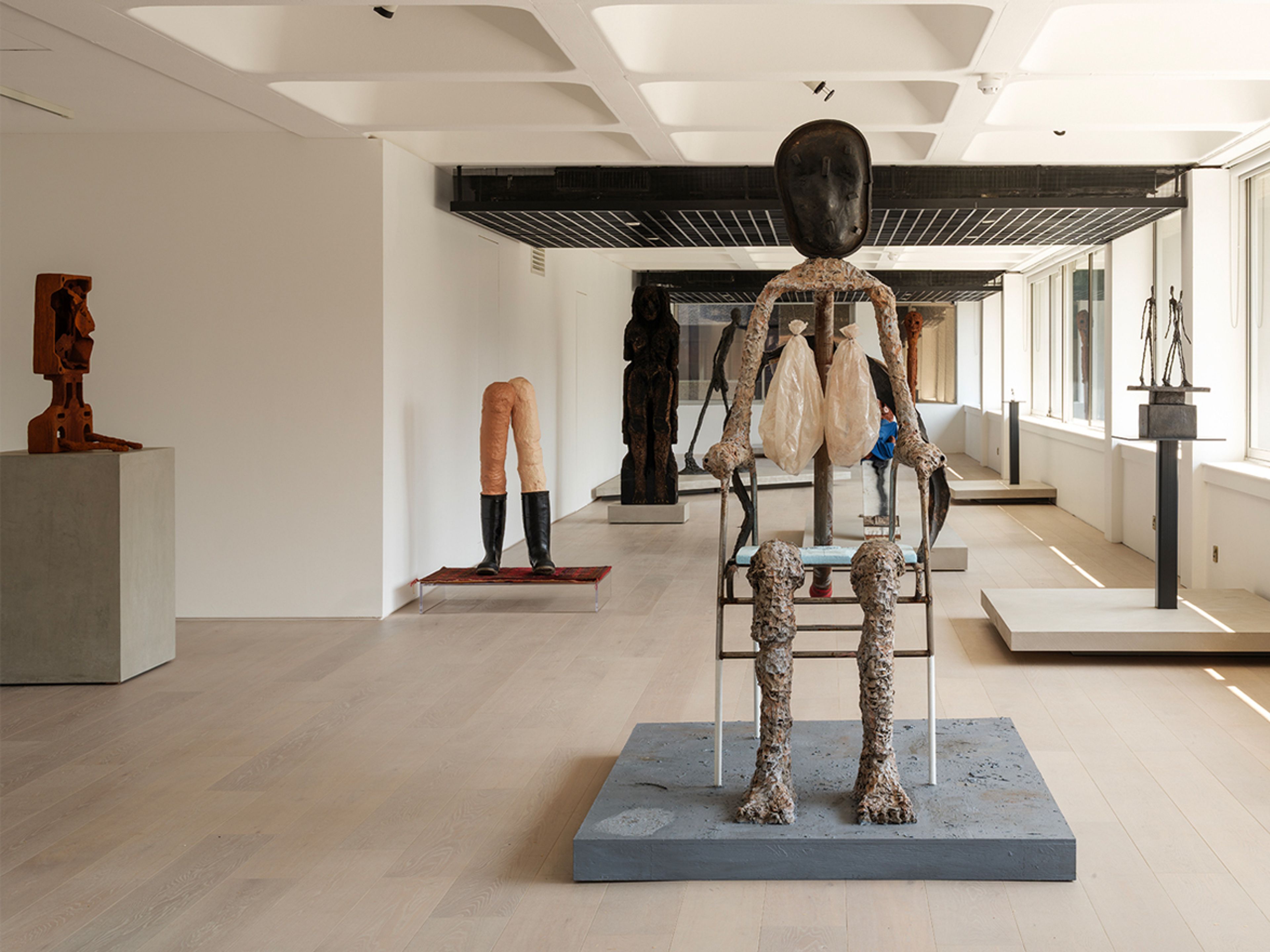
Installation view, Encounters: Giacometti, Barbican Centre, London, 2025. Photo by Max Creasy
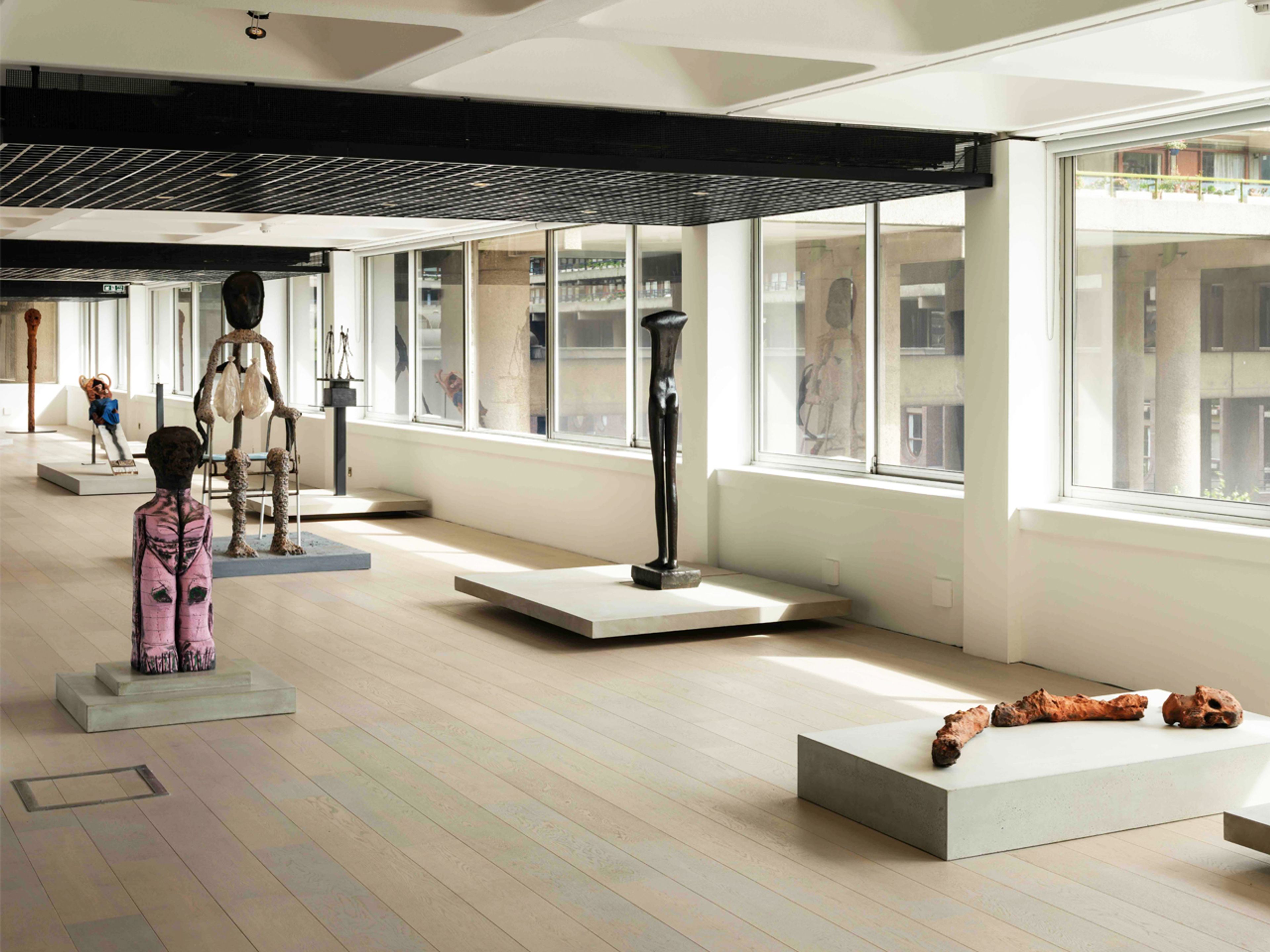
Installation view, Encounters: Giacometti, Barbican Centre, London, 2025. Photo by Max Creasy
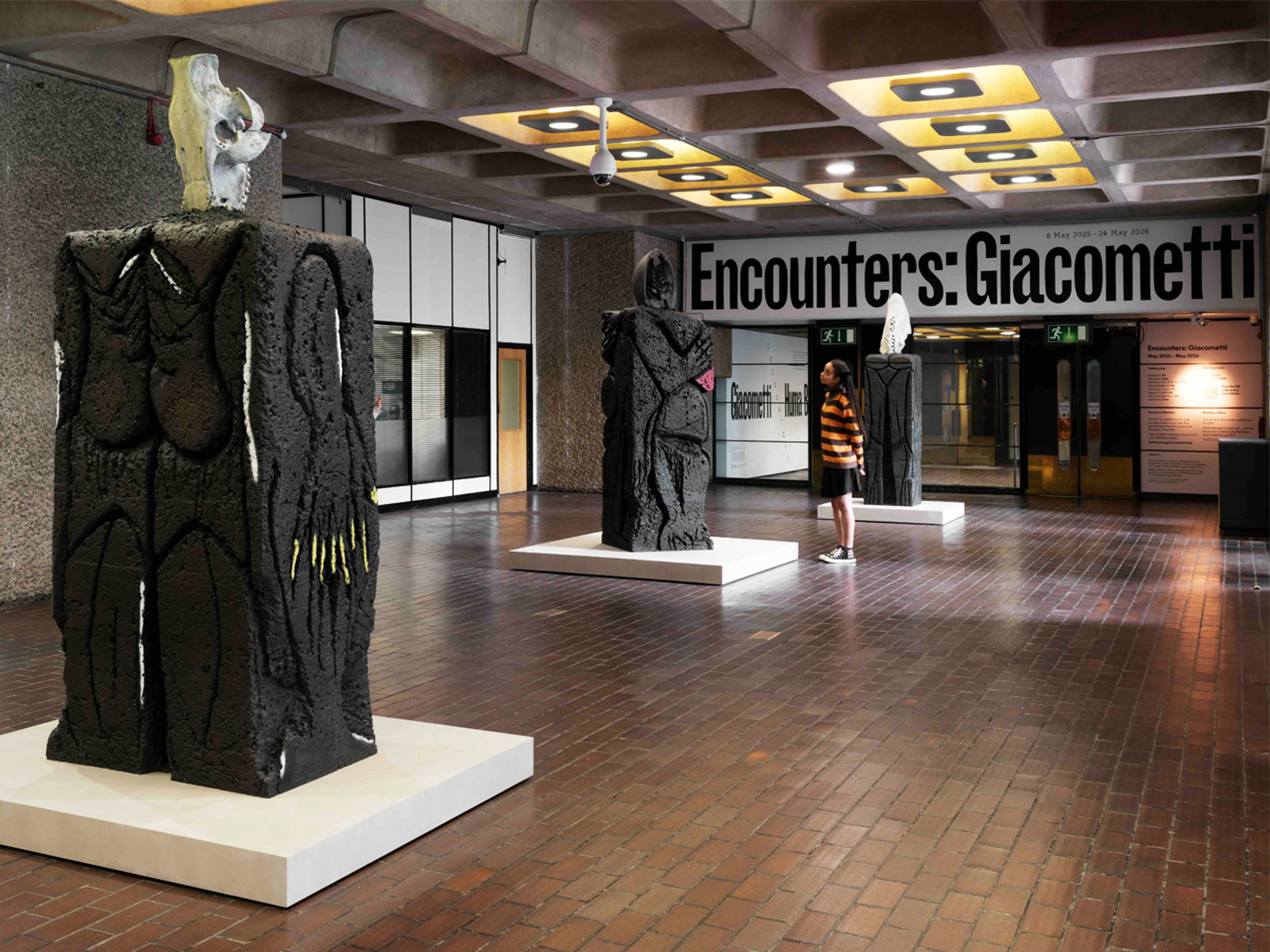
Installation view, Encounters: Giacometti, Barbican Centre, London, 2025. Photo by Max Creasy
From May through August 2025, Bhabha’s work is featured in Encounters: Giacometti at the Barbican Centre in London. Curated by Shanay Jhaveri, the exhibition includes significant works by Giacometti on loan from the Fondation Giacometti, installed alongside work by Bhabha, including an edition of Distant Star, after which the Paris presentation is titled.
“It is precisely in considering the intention of an artistic imaginary like Bhabha's—in which the continual dialogue between past and present can serve to resist the simple categorizations of modern, post-colonial, postmodern, global, local, etc.—that allow museums … to invite a more sustained and critical discourse over common binaries and dichotomies.”
—Shanay Jhaveri, Head of Visual Arts, Barbican Centre, London
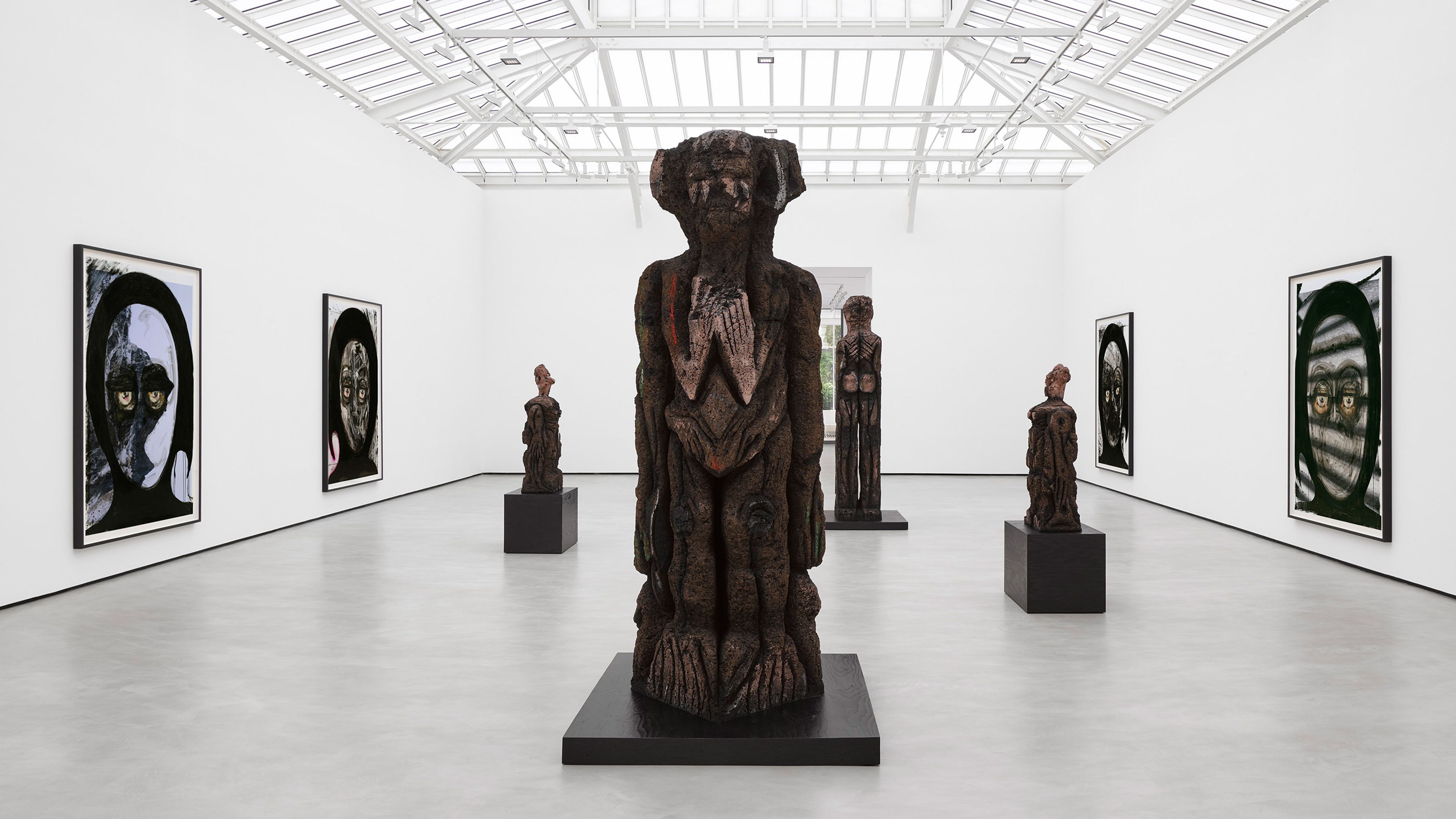
Installation view, Huma Bhabha: Distant Star, David Zwirner, Paris, 2025

Inquire about works by Huma Bhabha
